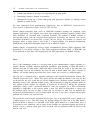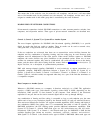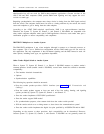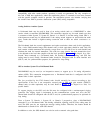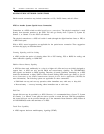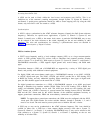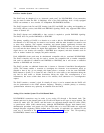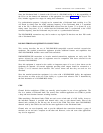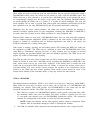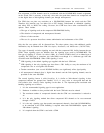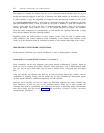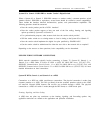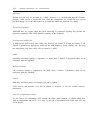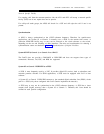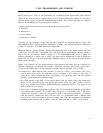
2-10
NETWORK CONNECTIONS AND CONFIGURATIONS
When CDMs are used to provide the drop and insert function, they are typically located near where a
DS1/DMI-BOS facility leaves the switch and are placed in series with the DS1/DMI signal. The
CDMs allow one or more channels to be inserted into a DS1/DMI facility at the transmit end and to
be correspondingly dropped from the facility at the receive end. The remaining DS1/DMI channels
are passed through the CDMs and to a System 75 or System 85 switch unchanged. This drop and
insert capability can be used to provide both point-to-point and multipoint nonswitched private-line
data connections over the same DS1/DMI facility that also provides interswitch connectivity.
Multipoint does not mean “shared channel,” but rather that separate channels are dropped or
inserted at multiple separate points. For this arrangement (assuming that DMI-MOS or ISDN-PRI is
not used), there may be three or more CDMs connected in a series multipoint link.
Because CDMs connect in series with a DS1/DMI-BOS facility, they can work with other equipment,
such as channel-expansion multiplexed (CEMs), connected on the same facility. Channels that are
dropped or inserted are considered used for dedicated applications (not used by the switch) and
should be translated into a dummy trunk group.
With respect to framing, signaling, and line-coding options, ESF framing and B8ZS line coding are
not supported by CDMs. The CDM may be connected in series with DS1/DMI-BOS links using
either RBS or 24th-channel signaling. However, if those channels that are dropped or inserted
require signaling, the associated channel units must use robbed-bit signaling. The CDMs do not now
support any format of 24th-channel signaling.
The CDM provides two relay contact closures that are used to indicate major alarm conditions. Since
CDMs are located in series with a DS1/DMI facility (assuming that DMI-MOS or ISDN-PRI is not
used), alarms could occur on any of the three “segments” of the facility (that is, between the local
switch and its associated CDM, between the two CDMs, or between the distant switch and its
associated CDM). The relay contact closures indicate the segment of the transmission facility
(relative to the CDM) that may contain problems. Both contact closures should be wired to the
external alarm interface of the associated switch, so they may be used for fault isolation.
CEM to a BCM32000
The channel-expansion multiplexer (CEM) is also called a bit-compression multiplexer (BCM32000).
When CEMs are used, they are always used in pairs; one at each end of a DS1/DMI-BOS link
connecting two switches. Each CEM provides two DS1/DMI-BOSes to the switch and one DS1
toward the transmission facility. The CEMs may be used to perform two functions:
1.
2.
The CEM can compress two DS1/DMI-BOS channels, which contain voice-grade data (4.8K-
bps maximum) and/or voice, into one channel. This allows a CEM to compress up to 48 voice
or voice-grade data channels onto one DS1/DMI-BOS transmission facility. The compressed
channels are uncompressed at the distant or receive-end and used normally.
NOTE: Digital data channels and the 24th signaling channel cannot be compressed. These
channels must be transmitted through the CEM as uncompressed channels.
The CEM can multiplex both compressed and uncompressed channels onto a single data link.



